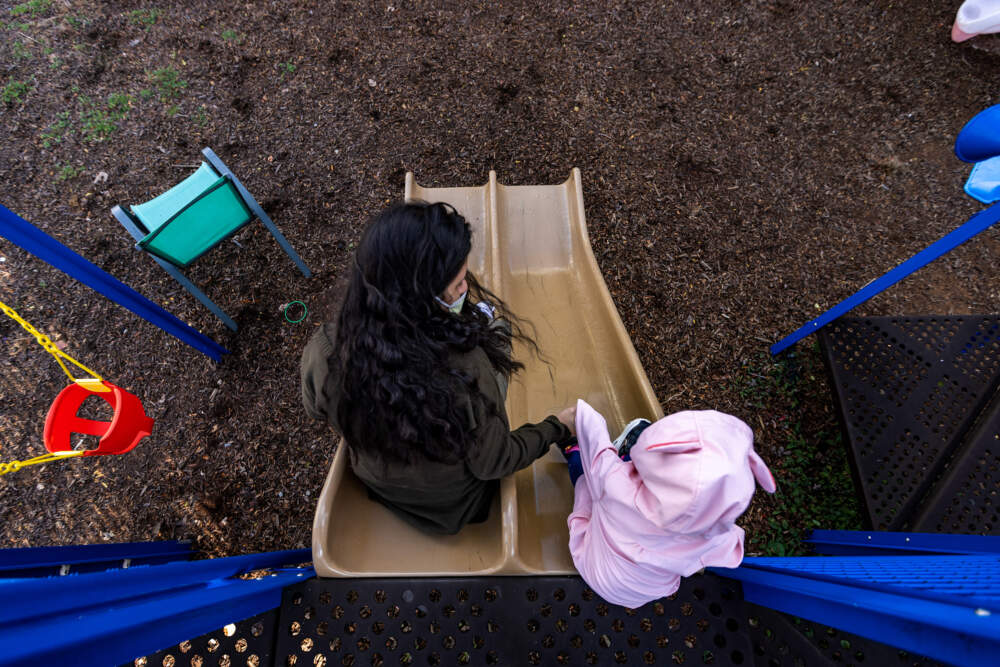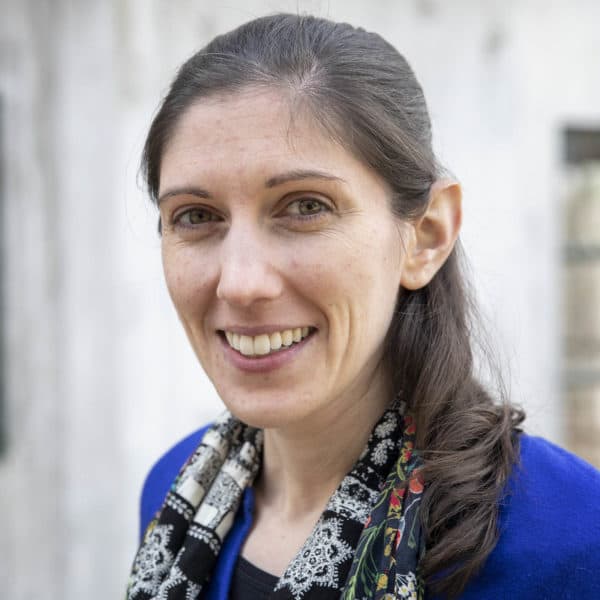Advertisement
State-funded shelters in Mass. reach new record: nearly 5,000 families

The commonwealth's family shelter system has reached an all-time high: 4,939 families with children living in state-run accommodations because they lack stable housing. As of Monday evening, most of them — 3,534 families — were in shelters around Massachusetts, while another 1,405 families were in overflow hotels and motels.
State officials said they are working to expand capacity in the system — officially called Emergency Assistance — which is bulging at the seams.
“Massachusetts faces an unprecedented increase in the number of families experiencing homelessness driven by high housing costs and new arrivals to the state,” said Kevin Connor, a spokesman for the Executive Office of Housing and Livable Communities, in a statement. He added that his agency, which oversees the family shelter system, is engaged in a “whole-of-government approach” to meet the needs of families.
The last time emergency family shelters were serving this many people was in October 2014. The average family now spends a little over a year in state-funded shelter.
"These are levels that our agency hasn't seen since World War II."
Larry Seamans, FamilyAid
"These are levels that our agency hasn't seen since World War II," said Larry Seamans, president and CEO of FamilyAid, which has a contract to run 135 shelter units for the state.
Roughly a third of the households in FamilyAid's units are new arrivals, Seamans said. "We're finding families, literally they've been given a bus ticket by other parties. They arrive in our city, in our communities at night with nothing but the clothes on their back," he said.
Homeless advocates believe the number of families in the shelter system is just a fraction of the state’s total family homelessness. Some families do not qualify for state shelter, and some may be staying with friends or relatives which means they are not included in the shelter numbers.
School data, which uses a broader definition of homelessness, suggests there are twice as many children experiencing homelessness as are found in state shelters. Kelly Turley, associate director for the Massachusetts Coalition for the Homeless, said even the school data is likely an undercount.
Advertisement
“For every school-aged [homeless] child, it's estimated that there is another preschool aged child experiencing homelessness,” Turley said. “So the families that are in Emergency Assistance shelter really are just a small portion of all of the families, and all of the people in Massachusetts, who are experiencing homelessness.”
Under a 1983 law, Massachusetts is required to provide shelter to eligible families, and the state has been lauded for creating one of the most comprehensive systems in the country. Some places, like New York City and Washington, D.C., have “right-to-shelter” measures, but Massachusetts is the only state with such a law.
Last year, lawmakers allocated $264 million toward the emergency family shelter system. This year, lawmakers are considering earmarking just under $325 million. Some of the proposed funding may go toward a recent settlement in a class-action lawsuit that is prompting key elements of the shelter system to be revamped.
What's driving the increase
Advocates said there are several reasons for the recent increase in family homelessness in Massachusetts. In addition to an expensive housing market and swelling immigration numbers, some experts pointed to the end of pandemic-era programs such as eviction protection and certain federal funds to prevent homelessness.
Other experts said the lengthy federal process for new immigrants to obtain work permits may be forcing some families into homelessness, and making it difficult for them to leave the shelter system once they enter.
Another factor in the rising number of families in the state system could be a more open shelter door. Turley said she’s noticed a “softening” of eligibility criteria under the Healey administration, which took the reins this year. For example, Turley said she's noticed the state allowing more families that appear eligible to move into shelter immediately, and gather all the necessary documentation within 30 days.
“These are all families that have no place else to go, but maybe in the past would have been denied or delayed in accessing shelter,” Turley said.
Rethinking family shelter
The state has started several new initiatives to address the growth in family homelessness, particularly the increase in newly arrived families. In June, the state opened its first Family Welcome Center and began offering some pre-shelter housing at Joint Base Cape Cod. It also launched a host family program. This month it began providing legal services to new arrivals, partly in an effort to expedite work authorizations.
Former Gov. Charlie Baker sought to eliminate the use of hotels and motels for shelter, reducing those units to the single digits in much of 2021. However, the number has ballooned in recent months to well over 1,000 hotel and motel units.
Seamans, of FamilyAid, worries these accommodations are not ideal for families. Although superior to sleeping in a tent or in a hospital emergency room, he said they often lack communal spaces such as play areas, and easy access to food, transportation, social workers and case managers.
"We have found that a safe living space combined with space for educational services and some space for children to be children, reduces family stress, reduces time in temporary housing and shortens the time for families to get back up on their feet," Seamans said.
FamilyAid's congregate shelters have an average stay of 130 days, less than half the state average. When FamilyAid places a family in a private apartment without daily services onsite, Seamans said the average stay is significantly longer — 368 days.
“All these children in shelter, they're the future of the commonwealth."
Aura Obando, Boston Health Care for the Homeless Program
The record number of families in state shelters is prompting some advocates to call for a reevaluation of the state’s approach to family homelessness.
“We're still having families go through this sort of traumatic shelter system,” said Aura Obando, medical director of Boston Health Care for the Homeless Program’s family team. For individuals, she pointed to the use of alternative programs such as permanent housing with supports that help people find jobs and address other challenges that contribute to their lack of housing. Obando argues that similar programs would help families with children.
“Innovative housing models have been implemented for the adult and youth [homeless] populations much more than [for homeless] families,” she said.
The stakes, she added, are high. For children experiencing homelessness, short-term problems like behavioral issues and potty-training regression can arise, as well as potential long-term health problems.
Obando pointed to evidence that stress during childhood, like the strain caused by homelessness, can make a person more likely to develop chronic health and mental health problems later in life, such as diabetes, heart disease, depression and substance use disorder.
“All these children in shelter, they're the future of the commonwealth," she said. "I hate the idea of having them incur all this trauma that might be unnecessary if we could just house them, support their parents, support their families.”
This segment aired on July 25, 2023.
